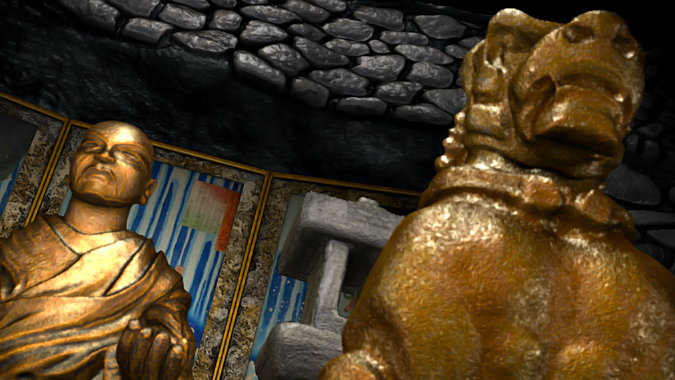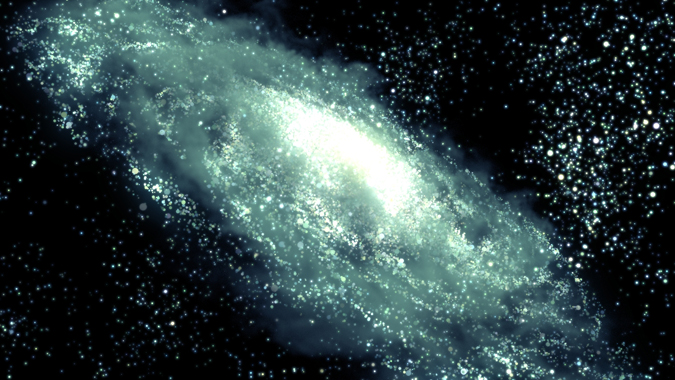>> Terracotta
Independent study developing shader components and a pipeline emphasis for render-optimized high resolution imagery with Renderman Studios.
Z Brush assets consisting of 9 million polygons each are extracted to Renderman for Maya as SubD proxies with 32 bit Displacement maps.
Shaders written in SLIM extract AOVs for post-rendering modification, layer displacement maps with procedural patterns, and direct inferred passes to bake and reuse raytraced, subsurface, and deep shadow information.
720p frame render time: Approx 80 seconds. Imagery inspired by the terracotta statues in Xi'an China.
|
 |
|---|
| Tools Used: Pixologic Z Brush | Autodesk Maya | Pixar Renderman Studios | RSL | Apple Shake |
>> Hachiman
RMS study implementing additional elements of ZBrush asset integration, texture utilization, lighting, and compositing.
ZBrush GoZ workflow to preserve UV information across software allows additional texturing methods.
In addition to photoshop image sources, workflows with ZBrush extract 3D painted textures, projections, and baked material and lighting assets that conform to Maya render layer and light linking processes.
Imagery inspired by Koshun's Shinto deity Hachiman - depicted as a buddhist monk.
|
 |
| Tools Used: Pixologic Z Brush | Autodesk Maya | Pixar Renderman Studios | Adobe Photoshop | Apple Shake |
>> Python Rubik's Cube
This HDA utilizes the Type Operator's Event Handling system to create a fully-functional Rubik's Cube - built and manipulated entirely with Python.
The On-Created event runs a Python script that generates the SOP and SHOP networks each time the asset is dropped to scene. This guarantees flawless integration with any Houdini project.
A second module consist of conditional functions that permit geometry rotation without breaking transformations at the global level.
On-Delete and On-Update events run Python scripts that delete all networks within the HDA (this prevents baking networks to the asset). |
 |
| Tools Used: SideFX Houdini | Python | Rendered with Houdini's PBR Renderer |
>> Tornado Funnel FX
FX animation study of a tornado. The effect is rendered atop a camera projection that is concept for scale and orientation.
The combination of a SOP, POP, SHOP, and COP networks all sharing the same velocity parameter create this tornado funnel effect.
The effect originates from a polywire, a grid, and a popnet.
Point normals from SOP are brought in as velocity using VOP.
A Popnet scatters points along the center of the funnel using the same velocity to create a debris field. SHOP is used to adjust opacity during particle life. |
 |
| Tools Used: SideFX Houdini | HScript | Rendered with Mantra | Adobe Photoshop |
>> Point Star Cluster
A study with the objective to create outer space imagery using only Houdini procedural networks. No photography or textures are used in this particle-based star system render.
VOP networks illuminate points and contrast PSCALE with noise to add variety and depth. The central star cluster uses tangent operations to create a spiral animation.
This point system is also used in a volume-from-points network to create a volumetric gas simulation.
These elements are brought into a Composite Operator Network. Here they are layered, colorized, and manipulated to create the final render. |
 |
| Tools Used: SideFX Houdini | HScript | Rendered with Mantra |
|
![]()
